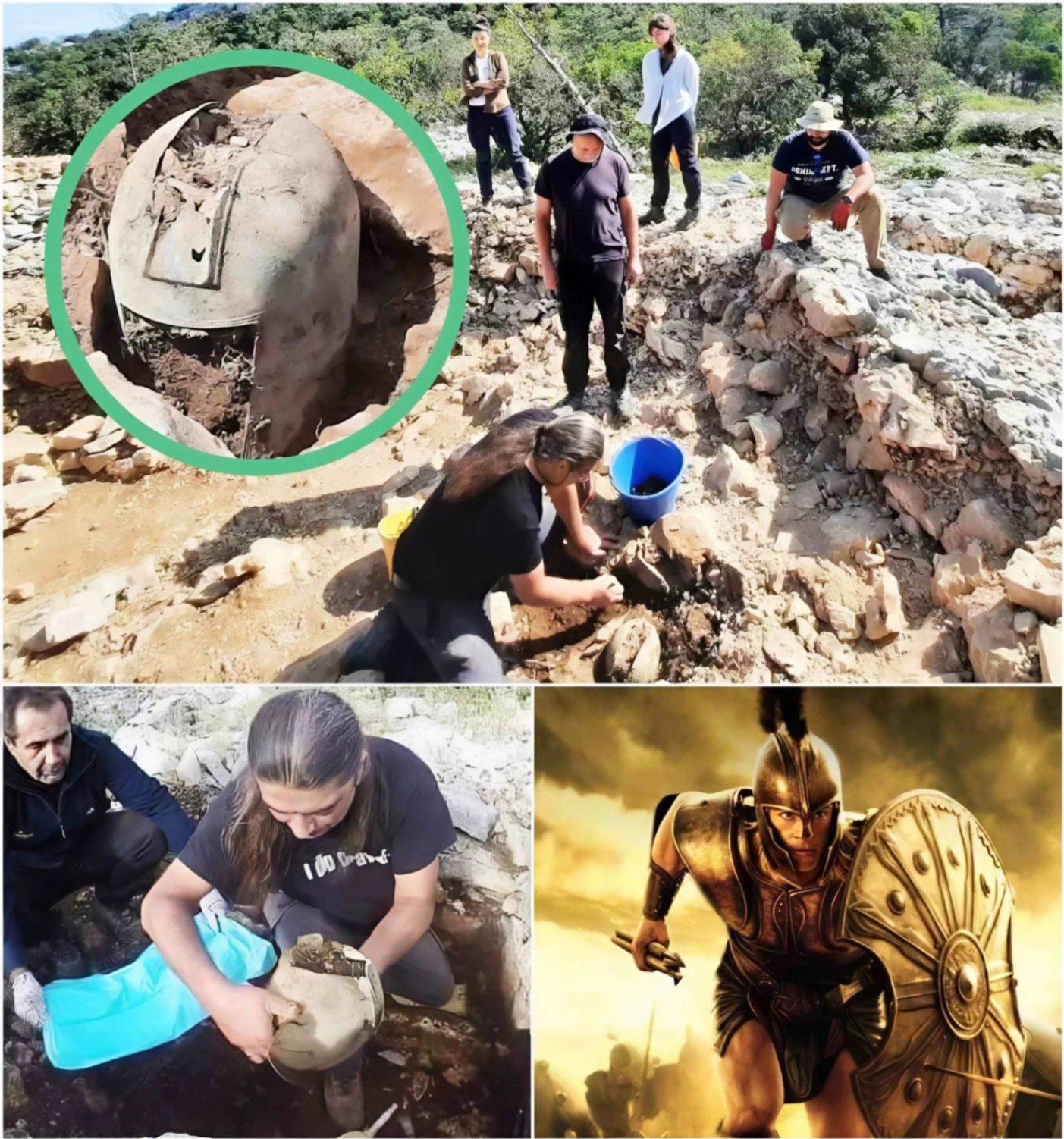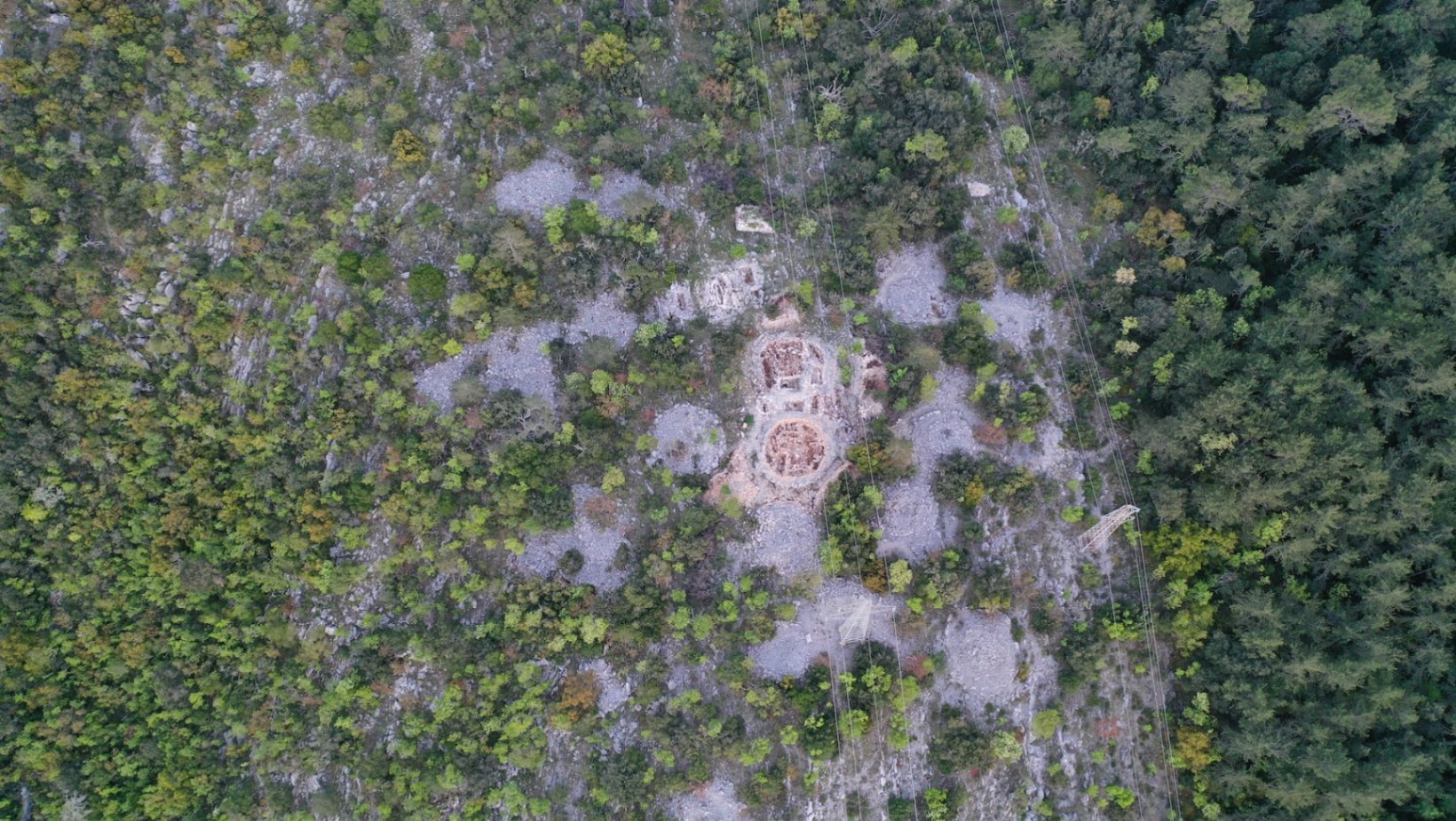A remarkable archaeological find has shed new light on the valor and artistry of ancient Greek and Illyrian cultures. A 2,500-year-old helmet, unearthed in a recent excavation, offers a fascinating glimpse into the military prowess and ceremonial practices of these ancient peoples. This Greco-Illyrian helmet, adorned with intricate designs and rich symbolism, not only highlights the artistic achievements of the era but also provides insights into the heroic ideals and cross-cultural interactions of the time.

The Discovery: Unearthing a Symbol of Ancient Valor
The helmet was discovered during an excavation in a historically significant region known for its Greco-Illyrian heritage. Found in a well-preserved burial site, the helmet was remarkably intact, offering a rare opportunity to study its craftsmanship and contextual significance.
Key features of the helmet include:
- Intricate Design: The helmet is adorned with detailed engravings and decorative motifs that reflect both Greek and Illyrian artistic styles. The designs include depictions of mythical creatures, geometric patterns, and symbolic imagery that may have had ceremonial or protective significance.
- Craftsmanship: Made from bronze, the helmet showcases advanced metalworking techniques of the time. Its construction reflects a blend of Greek and Illyrian influences, demonstrating the exchange of artistic and technological knowledge between these cultures.

- Symbolism: The helmet features symbols associated with heroism and divinity, including representations of gods and legendary figures. These symbols likely held deep meaning for the wearer, possibly invoking protection and favor from the gods in battle.
Historical Context: Greco-Illyrian Relations and Heroism
The Greco-Illyrian helmet provides valuable context for understanding the relationship between the Greek city-states and the Illyrian tribes. During the 5th century BCE, the Greeks and Illyrians engaged in both conflict and cooperation, influencing each other’s cultures and military practices.
- Greek Influence: The helmet reflects Greek martial traditions and aesthetic sensibilities, indicating that the Greeks had a significant impact on Illyrian military attire and symbolism. Greek art and culture were highly influential throughout the Mediterranean, and this helmet demonstrates how Greek heroism and ideals were adopted and adapted by neighboring cultures.
- Illyrian Tradition: The helmet also incorporates elements of Illyrian design and symbolism, reflecting the unique cultural identity of the Illyrians. The presence of indigenous motifs suggests that the helmet was not only a symbol of military might but also a representation of Illyrian values and beliefs.
Heroism and Ceremonial Significance
In ancient Greek culture, helmets were more than just protective gear; they were symbols of heroism and valor. The detailed artwork on the helmet suggests it may have been used in ceremonial contexts as well as in battle. It may have belonged to a prominent warrior or a figure of high status, whose deeds and virtues were celebrated through the artistry and symbolism of their armor.

- Heroic Ideals: The depiction of heroic figures and divine symbols on the helmet highlights the importance of heroism in Greek and Illyrian societies. The wearer of the helmet was likely seen as a heroic figure, embodying the ideals of courage, strength, and divine favor.
- Ceremonial Use: The helmet’s elaborate design suggests it may have been used in rituals or ceremonial occasions, possibly to honor the gods or commemorate significant events. Its intricate craftsmanship and symbolism indicate that it was not merely a functional object but also a ceremonial artifact of great significance.
Implications for Understanding Ancient Cultures
The Greco-Illyrian helmet provides new insights into the cultural exchanges between the Greeks and Illyrians, revealing how these ancient peoples interacted and influenced each other. The blending of artistic styles and symbolic elements underscores the interconnectedness of Mediterranean cultures and the shared values that transcended regional boundaries.
For historians and archaeologists, the helmet represents a valuable piece of the puzzle in understanding the complex relationships between ancient civilizations. It offers a glimpse into the material culture of the time, shedding light on the artistic achievements and martial traditions of both the Greeks and Illyrians.
Ongoing Research and Future Exploration
Scholars are continuing to study the helmet to uncover more about its origins, uses, and symbolic meanings. Research involves detailed analysis of the helmet’s construction, artistic elements, and historical context. This ongoing work aims to provide a fuller picture of the cultural and historical significance of the helmet.
Future excavations and studies may yield additional artifacts and insights, further illuminating the rich tapestry of ancient Greek and Illyrian history. The helmet stands as a testament to the valor, artistry, and interconnectedness of these ancient civilizations, offering a captivating glimpse into their heroic past.
Conclusion
The discovery of the 2,500-year-old Greco-Illyrian helmet is a remarkable find that enhances our understanding of ancient heroism and artistic expression. Its intricate design and symbolic significance reveal the deep cultural connections between the Greeks and Illyrians, highlighting the shared ideals of bravery and divine favor that shaped their societies. As research continues, the helmet will undoubtedly provide further insights into the rich and complex history of these ancient peoples.





